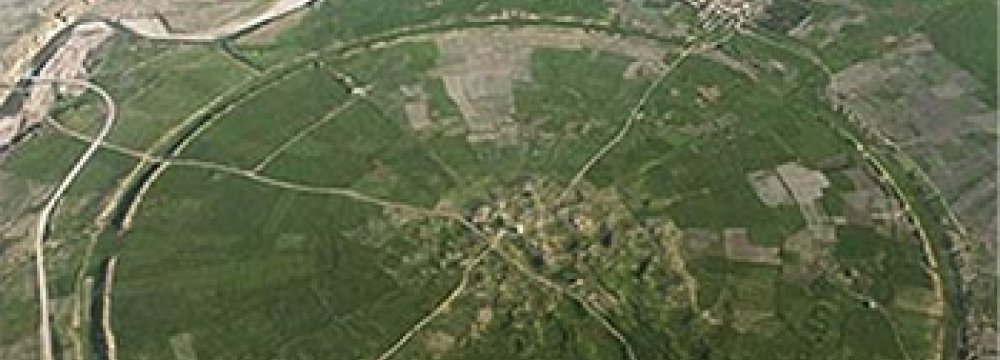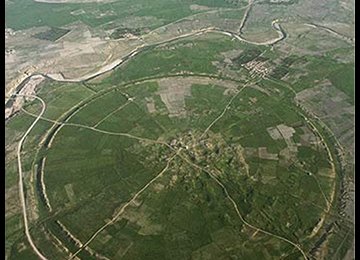The circular citadel city of Gur was the first capital of the Sassanid Empire. It is situated in Fars province, about 110 km south of Shiraz.
Ardeshir-e Pabakan, the first king of Sassanid dynasty, is named as the city’s founder in most sources. He chose the city as his capital and populated it.
The ancient city is striking for its completely circular shape, which is in fact associated with the earlier Parthian Dynasty. The city’s specific architectural style is a representation of the transition from the Parthian to the Sassanid era, according an article on the wonders of Iranian city planning, published by the Circle of Ancient Iranian Studies.
Based on the historian Tabari’s account and supported by archeological evidence, the city was founded prior the important battle in which Ardashir defeated the last Arsacid king, Ardavan (Artabanus IV) in April 28, A.D. 224.
According to Islamic documents, prior to the construction of Gur city, the area where Gur is located, was flooded by Alexander of Macedonia and turned to wetland. Later, by order of Ardeshir I, the wetland was drained.
Defense
With Ardeshir still fighting to gain power, defense was the city’s primary function. Remains of the polygonal and spider-web defensive walls can still be traced 10 km off the central part of the city.
The Firuzabad plain, where Gur is located, may have been chosen for this very defensive concern; it is almost entirely surrounded by mountains, but for two narrow gorges.
Gur was surrounded by a main wall of stamped clay, a ditch 35 meter wide, and a fore-wall. The plan of the city is a perfect circle of 1,950 meter diameter, divided into 61 sectors by 20 radial walls and 3 concentric circles, with the core circle of 450 meters in diameter, where official buildings such as a fire temple were constructed.
Four gates open to city of Gur: to the north lies Hormuz Gate; to the south Ardeshir Gate; eastward faces the gate of Mithra; and Bahram Gate opens to the west.
A famous tower or mil in the circular city is today among the only visible and standing remains in the city. The mil stands at the very centre of the city. It is a pier of rough stone masonry 9 meter square and more than 30 meters high. It was the core of a stair-tower, and thought to have had a winding external stairway.
Gur lost its status as a capital in the reign of Shapur I (240 – 270). Three centuries after the Arab invasion, the historian, Mas’udi, talks of the existence of the fire temple of Ardeshir-Khorra, which shows a continuous Zoroastrian tradition in the region. The name Gur was eventually changed to Firuzabad (victory town) during the Buyid period.





